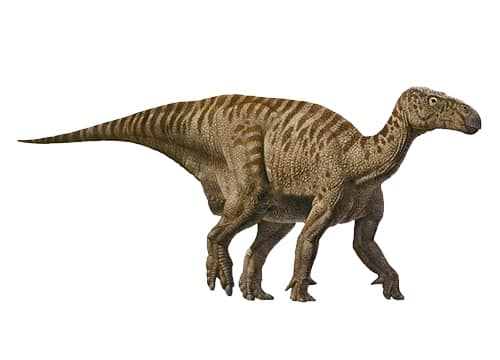Iguanodon


Name: Iguanodon
Pronounced: Ig-wah-no-don 
Meaning: Iguana tooth
Type: Euornithopod
Length: Up to 10 meters long
Diet: Herbivore
Period: Early Cretaceous
Years: 140 - 110 million years ago
Location: Africa, Asia, North America
Description: Iguanodon is a genus of ornithopod dinosaur that lived during the early Cretaceous period, around 126 to 125 million years ago. It was a large herbivorous dinosaur that was characterized by its distinctive thumb spikes, which it used for defense against predators. Iguanodon was one of the first dinosaurs to be named and described, and it has a long and rich fossil history. The species Iguanodon bernissartensis is the best known, and it is known from a large number of well-preserved specimens found in Belgium and England. Iguanodon was a bipedal dinosaur that stood on its hind legs and had a long, heavy tail that it used for balance. It had a wide, bulky body and a large head with a prominent beak. Its front legs were shorter than its hind legs, and it had five toes on each foot, with the innermost toes being larger and more robust. Overall, Iguanodon was a successful and widespread dinosaur that lived across much of Europe and Asia during the early Cretaceous period.
Loading images from Wikipedia
Loading a Random Dinosaur...


